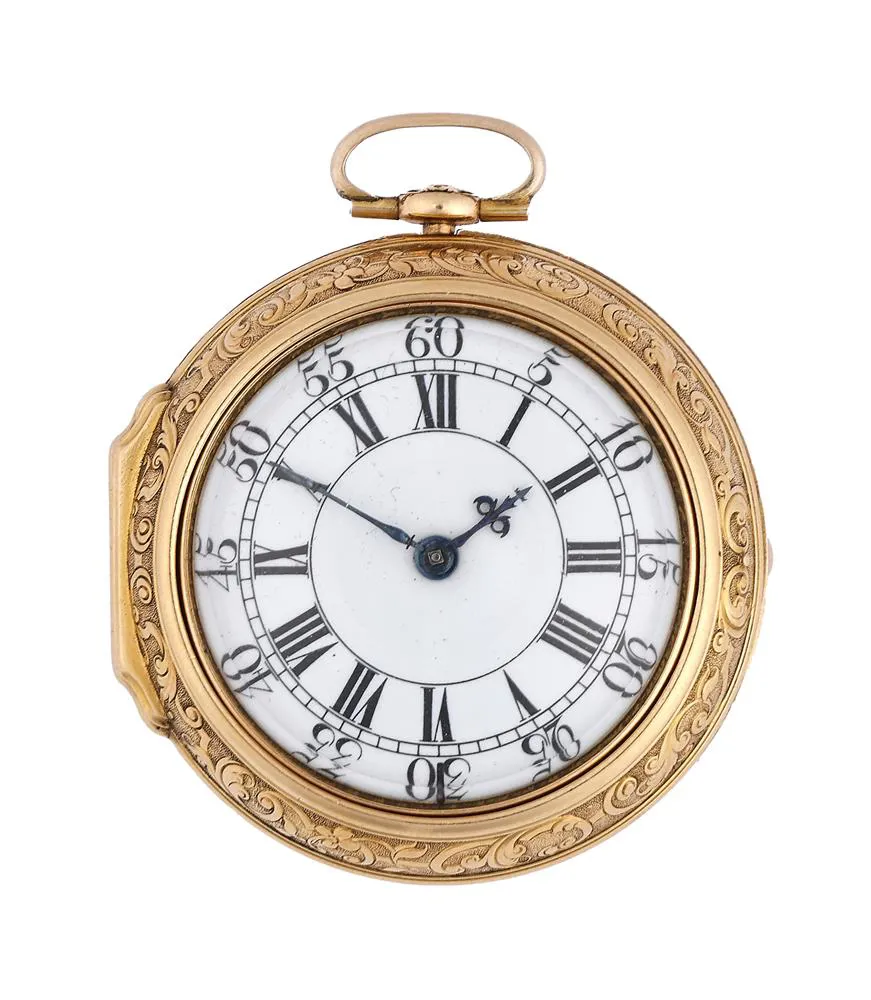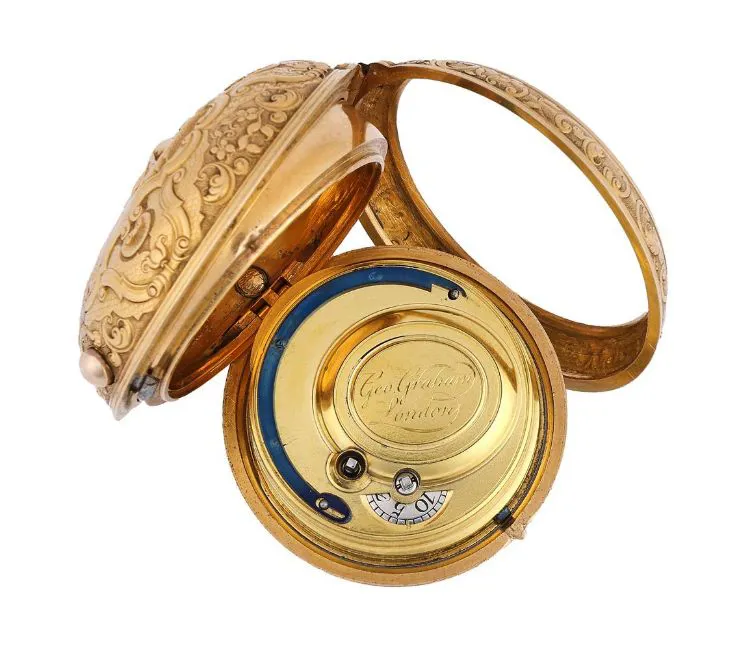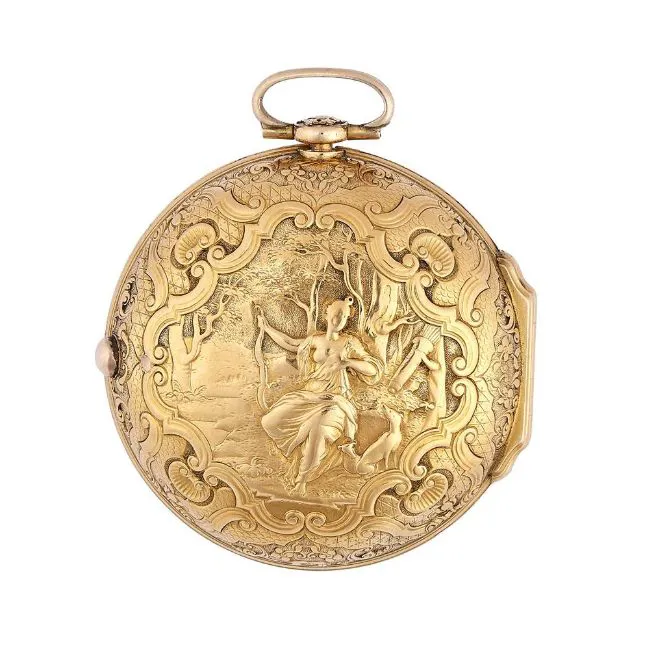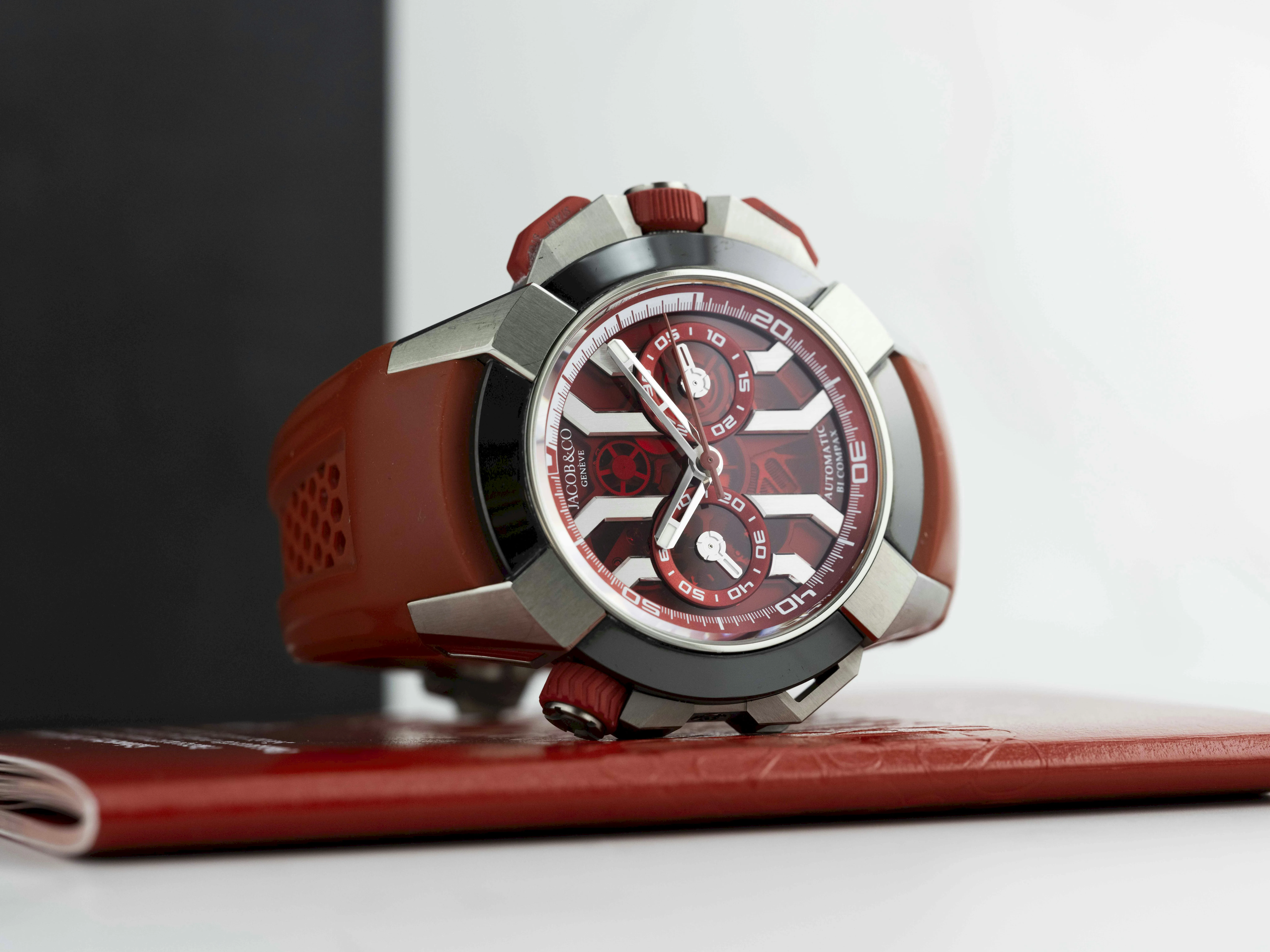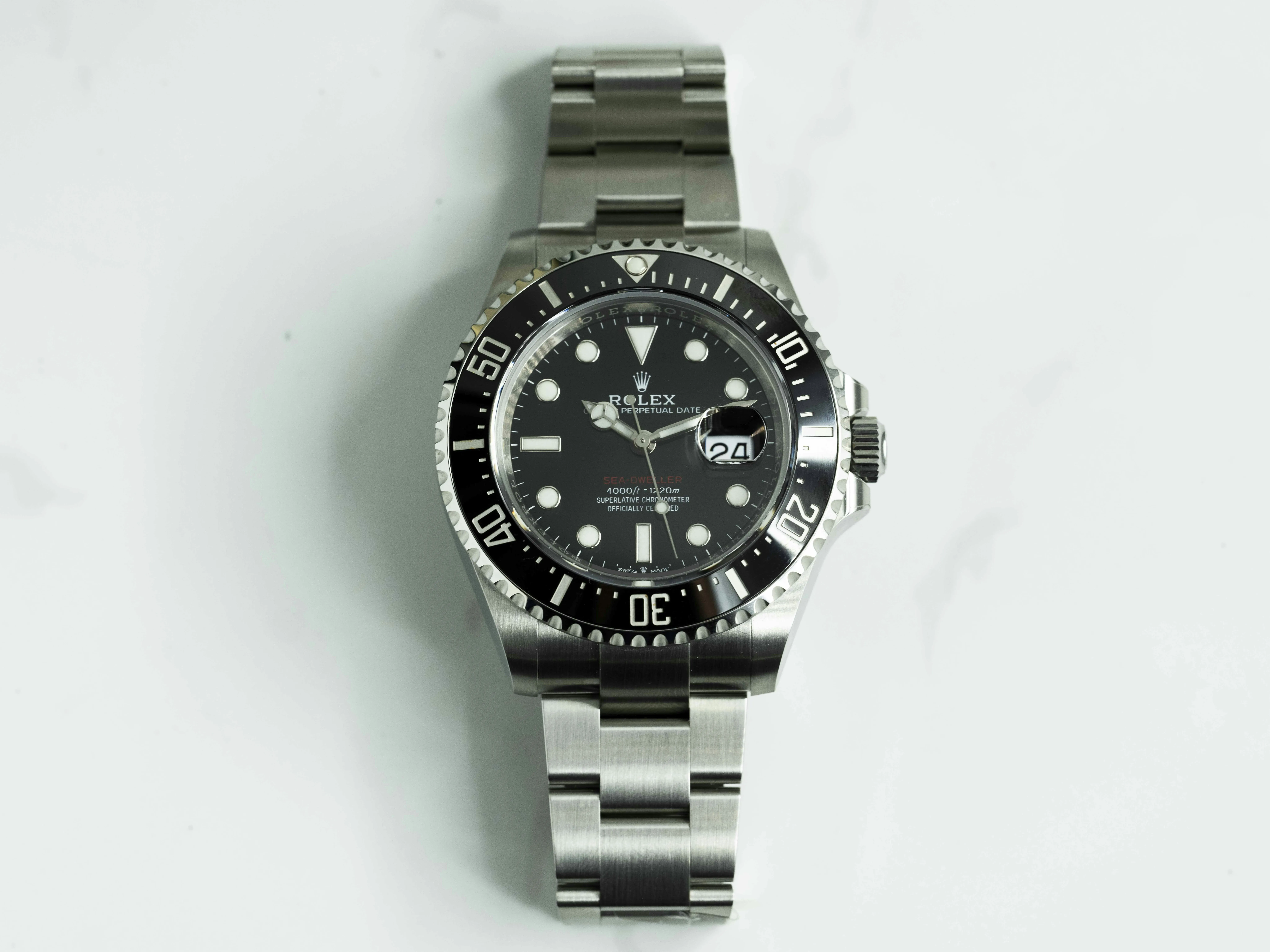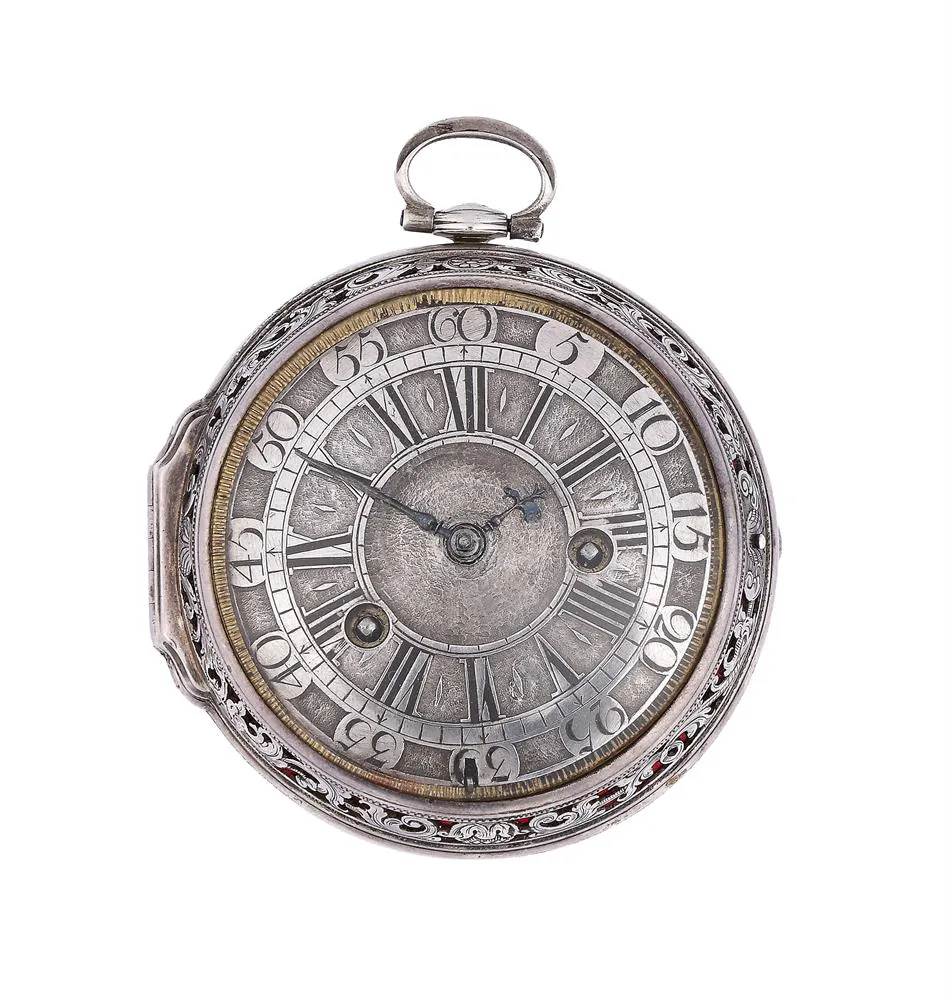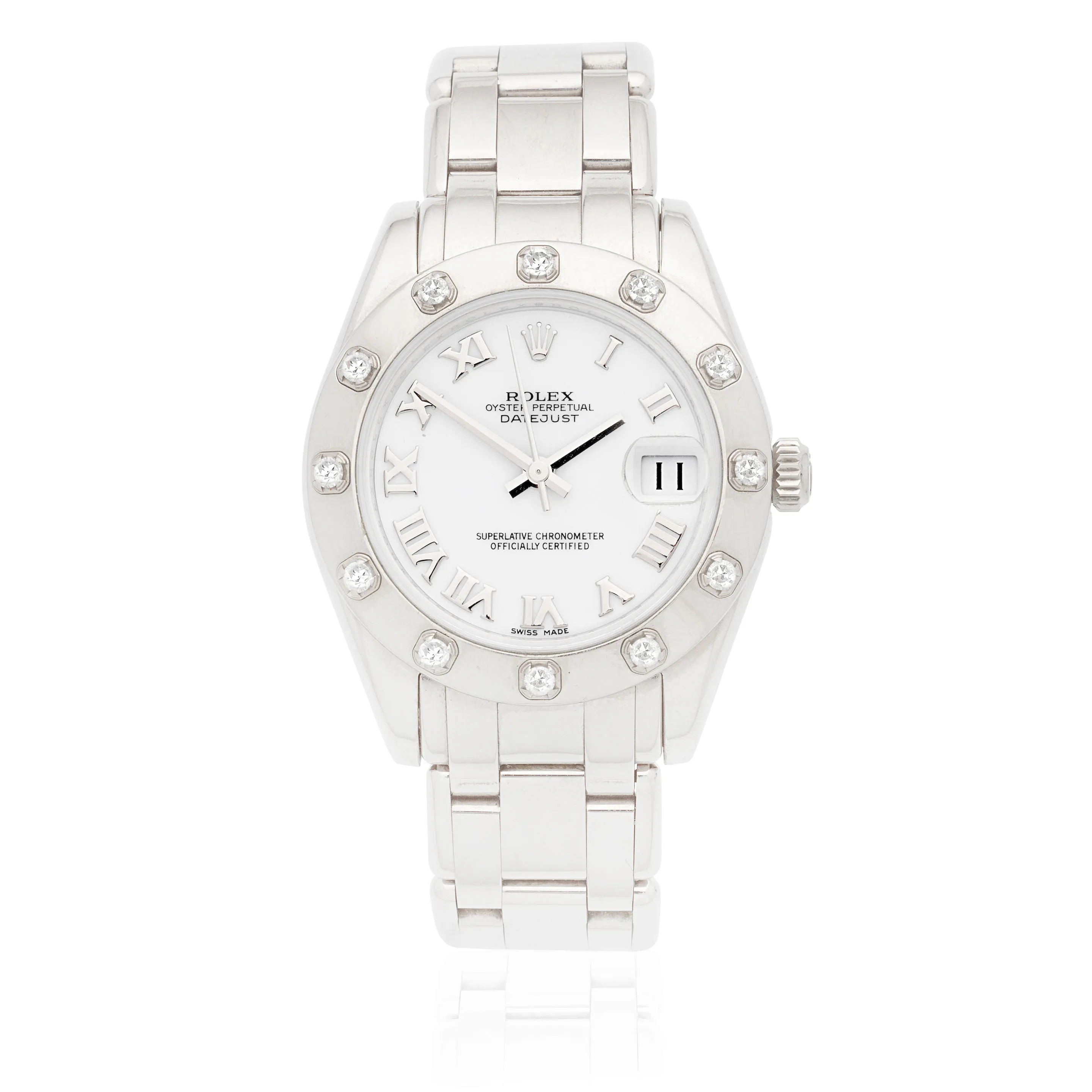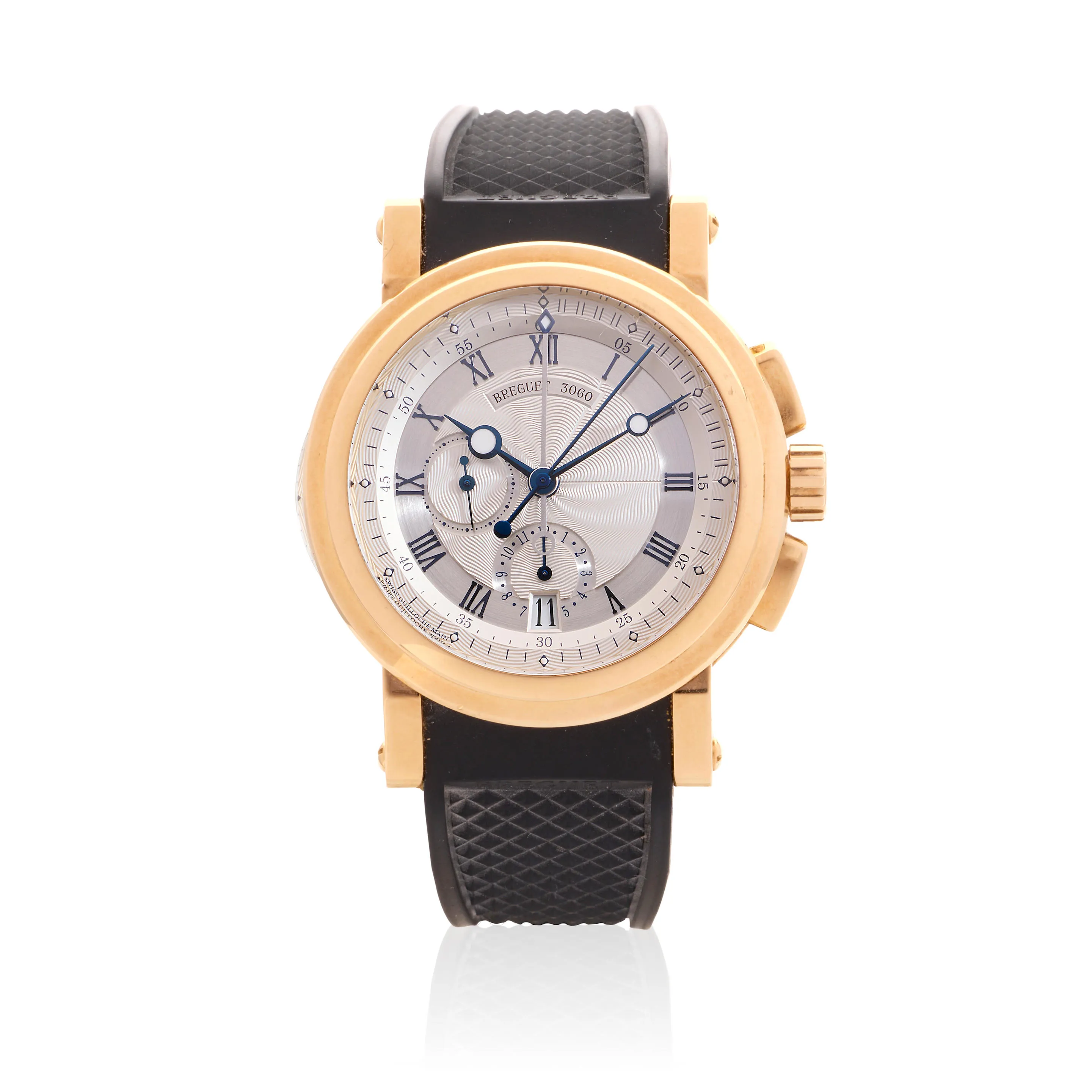Source:
Event:
Date:
Lot Number:
Condition: -
Year of Production: 1732
Case Size: 50mm
Case Material: Yellow gold
Dial Color: White
Bracelet/Strap: -
Movement Type: -
Box: No
Papers: No
Location: United Kingdom
Estimates 5,232 - 7,849 USD
Sale Price
Description
A VERY FINE GEORGE I GOLD REPOUSSE PAIR-CASED POCKET WATCH WITH CYLINDER ESCAPEMENT
GEORGE GRAHAM, LONDON, NUMBER 5438, 1732
The gilt full plate single fusee movement with four Egyptian pillars pinned through the backplate, scroll-pierced stop-iron block and cylinder escapement regulated by sprung three-arm steel balance with Tompion type regulation, the backplate with fine symmetric foliate scroll pierced and engraved balance cock with faceted diamond endstone, herringbone bordered canted rim and with wedge-shaped scroll engraved foot flanked by silvered regulation disc set within adjacent applied scroll engraved panel infill opposing signature Geo: Graham, London and numbered 5438 , with gilt brass dust cover similarly signed Geo. Graham, London , the slightly convex white enamel Roman numeral dial with Arabic five minutes to outer track and finely worked beetle and poker hands, the inner case with shuttered winding hole to rear cover and suspension post with bow at twelve o'clock, the outer case repousse decorated in the manner of George Moser with Diana the huntress seated within a woodland landscape with a hound within repeating S-scroll surround adorned with scallop shells at the quadrants within further scroll-bordered reserves alternating with floral panels, the bezel with circumference engraved with further scrolls into a matted ground and with moulded collar to outer edge, the inner case with marks for London 1732 maker IW for John Ward and stamped with repeat serial number 5438 .
The pillar plate 3.5cm (1.375ins) diameter, the outer case 5cm (2ins) diameter.
Provenance:
The Leonard Fuller Collection. Purchased from Malcolm Gardner, Sevenoaks, 29 th August 1967 for £265.
George Graham was born in around 1673 in Kirklinton, Cumberland, but by 1688 he had moved to London and entered into an apprenticeship with Henry Aske. Graham gained his freedom of the Clockmakers' Company in 1695 and went to work for Thomas Tompion, whose niece, Elizabeth, he married at St. Mary le Bow in September 1704. After the Tompion's failed partnership with Edard Banger Graham was trusted to become his successor with the two makers entering into a formal a partnership in 1711. On Tompion's death in 1713 George Graham inherited the business 'on the corner of Water Lane in Fleet Street' and continued there until 1720 when he relocated to 'the Dial and One Crown' further up Fleet Street, nearer Fleet Bridge.George Graham maintained the same exacting standards as his former master and also continued the serial numbering system established in around 1680/81. In 1722 he served as Master of the Clockmakers' Company and went on to establish himself as one of the most important clockmakers of his generation. Amongst his achievements was the further development of the deadbeat escapement, invention of the mercury compensated pendulum and the cylinder watch escapement. As well as clocks and watches George Graham was also a highly accomplished maker of scientific instruments with perhaps his most famous creation being the planetarium made for Charles Boyle, Earl of Orrery. He also produced the great mural quadrant for Edmund Halley at Greenwich observatory, also a fine transit instrument and the zenith sector used by James Bradley in his discoveries. Through his observations in testing his very highly regarded compasses Graham also discovered the diurnal variation in the terrestrial magnetic field in 1722/23.
George Graham also became an ardent supporter of John Harrison in the development of his marine chronometers to the extent that he forwarded an interest free private loan of £200 to Harrison to facilitate the building of H1. George Graham died in 1751 and was buried next to his former master in Westminster Abbey, leaving the business in the hands of a former apprentices, Samuel Barclay and Thomas Colley. George Graham's legacy is perhaps best reflected by the subsequent work of another former apprentice, Thomas Mudge, who went on to continue in the development of the marine chronometer after Harrison, and to invent the lever watch escapement.
The cylinder escapement was developed in around 1695 by Thomas Tompion and further refined by George Graham in 1726. This new escapement was perhaps the first developed exclusively for watch work and, as well as being a better rate keeper, the cylinder escapement also allowed movements to be made more compact (due to the escapement operating in one plane only). However, being a form of frictional rest escapement, the cylinder escapement was prone to relatively heavy rates of wear hence was less reliable than the verge (until hardened steel escape wheels and ruby cylinders were developed later in the 18th century). George Graham's faith in this new design of escapement was such that he incorporated it into all of his watches from around 1725/6 (between serial numbers 5175 and 5182). The present lot is a fine relatively early example of a Graham cylinder watch in fine condition complete with finely worked heavy outer repousse case.
